|
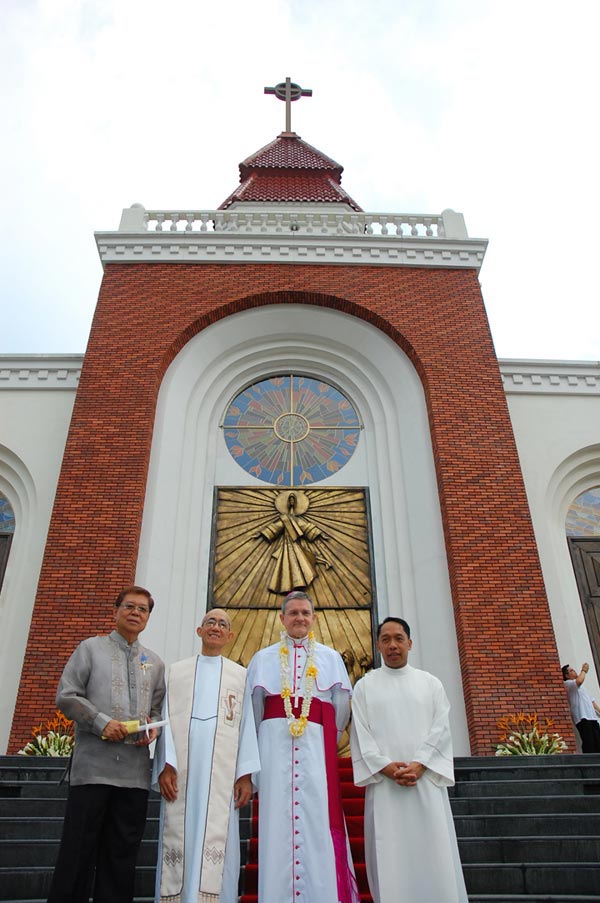

COLUMBARY
Santuario de San Vicente de Paśl (Shrine and Columbary) is run and managed by the Congregation of the Mission (Vincentian Fathers
and Brothers), located on Tandang Sora Avenue
in Quezon City (Metro Manila, Philippines). It was established
on March 25, 2003 in response to the challenge of the Jubilee Year 2000 of creating initiatives that will benefit the interests
of the marginalized. The Vincentian Fathers and Brothers believe that along with the building of a shrine is the building
of a community, disciples and a Vincentian devotion to its founder, St. Vincent de Paul.
In fitting celebrations on
September 26, 2004, St.Vincent de Paul was proclaimed the patron saint of the urban poor of Quezon City by Mayor
Feliciano Belmonte, Jr. Thousands of people have watched in wonder and awe at the huge structure
which has begun to take shape that can accommodate more than a thousand persons at a time and a Columbarium
integrated into the total Santuario design which can hold as many as 9,000 niches.
It
is a beautiful landmark on the otherwise crowded and busy Tandang Sora street
and it will have the additional distinction of being an environmental-friendly Church as the project plans would have it.
Inside the yet unfinished shrine, one cannot fail to notice the perpetual presence of a refreshing wind, the green leaves,
the open spaces, the remarkable peace and joy of being inside a true house of God. The wind and the atmosphere
it engenders cannot but turn the minds of visitors and prayerful worshippers to the account of the Holy Spirit hovering over
the Apostles. The narra trees, symbols of the Filipino nation and their sturdy faith, encourage worshippers to
praise God, whose presence is somehow more palpable and comforting in this place than anywhere else. They say that
the Gothic cathedrals of Europe are the product of the faith
of the West. Perhaps the Santuario de San Vicente de Paul will be seen in time as the product of the faith of
the Filipino people reaching towards the rest of the world where so many Filipinos are migrant workers. This can be
seen in the fan–shape structure which receives the worshippers in a loving and welcoming embrace.
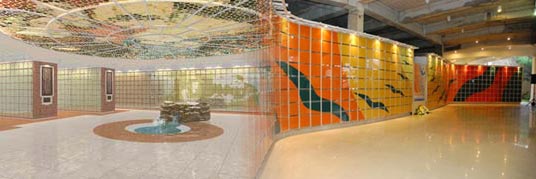
|
Add your content here
|
Add your content here
|
|
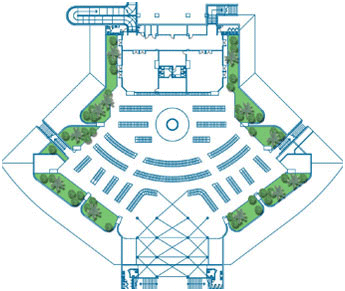
|
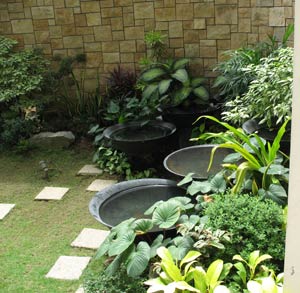
|

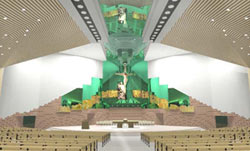
SHRINE
Santuario
de San Vicente de Paul (Columbary in a Shrine) is run and managed by the Congregation of the Mission
(Vincentian Fathers and Brothers). It was established on March 25, 2003 in response to the challenge of the Jubilee Year 2000
of creating initiatives that will benefit the interests of the marginalized. The Vincentian Fathers and Brothers believe that
along with the building of a shrine is the building of a community, disciples and a Vincentian devotion to its founder, St.
Vincent de Paul.
The site has a total land area of 5.2 hectares. It is bounded on north by Tandang Sora Avenue and St. Martin in its western part.
Viewing the place, one will find tall tress that help cooling the place, basketball courts, tennis courts and a soccer fields
where priests, seminarians and youths played together. Major buildings like: College Seminary, School of Theology , Priests' and Theologians'
Residence, Provincial House and Social Development Hall are situated safely and comfortably within the compound because of
the 1.20 kilometer perimeter fence that enclosed them.
Inspired by the spirit of St. Vincent de Paul's love for the
poor, the shrine shall be modest, simple and evincing a noble beauty. Its dominant roof profile starts low and then made to
soar. This symbolizes the Vincentian's mission and vision of uplifting the spiritual and material poverty of the poor who
would like to be “abundant in the eyes of God, as well as for the abundant who would like to share their blessings with
the poor.” Furthermore, the plan wraps around the main altar enhancing the active and full participation of the congregation
who joins the celebration.
To make sure that the faithful will have an active and full participation during the celebration,
an amphitheater type design and a fan-shaped structure are made possible. These really answer the goals and objectives of
the celebration, i.e. fellowship, unity of mind, heart and body and closer communion with one another. Above the altar is
the main dome of the shrine from where a vertical light shaft will illuminate and give life to the altar.
|
